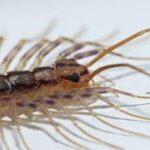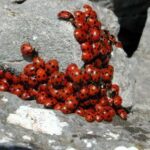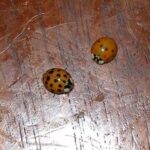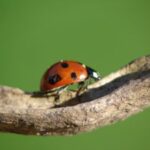If you have ever noticed a spider crawling across your carpet, you’ve just seen an arthropod. Centipedes, ladybugs, shrimps, spiders, and even horseshoe crabs all belong to the phylum known as Arthropoda.
Arthropods have been thought to share a distinct common ancestor with annelid worms; they similarly have a segmented body and a coelem. Certain arthropod fossils, some nearly 600 million years old, are among the world’s most well-preserved fossils of multicellular animals. The earliest arthropods were known as trilobites, which thrived in the sea. They were among the first animals to have segmented bodies, jointed appendages, and eyes capable of seeing images. Unfortunately, trilobites aren’t around anymore – they’ve been extinct for almost 25 million years.
The sheer number of arthropod species exceeds that of all the other classifications of animals combined. There are over 5 million species of arthropods, which are divided into two separate groups: arthropods with jaws (like centipede, ladybugs, shrimps) and arthropods with fangs or pincers (such as mites, spiders, scorpions). Some of the largest arthropods are Japanese spider crabs, which live in the seat near Japan and can measure over 12 feet across. On the opposite end of the scale, some parasitic mites are only .0003 inches in length.
In most arthropods, individual body segments usually only exist in the larval stage. For example, if you look at a caterpillar, which is a butterfly larva, you can see its body possesses several segments. An adult butterfly only has three regions, rather then separate segments. Most arthropods have three distinct body regions: the head, the thorax (mid-torso), and the abdomen. In some species, such as a crab, the head is a part of the thorax which is known as a cephalothorax.
They also have what is known as a compound eye, with a retina and lens. Made up of many different units, their brain receives a signal from each of the units, which then composes it into an image of an object. Though not clear, arthropods can see motion very quickly. Some arthropods only have a simple eye, which can only distinguish light and dark. Some even have both combined, like a dragonfly.
Arthropods possess an exoskeleton, which is a tough outer skeletal system, or “shell”, made mainly of chitin. When arthropods grow, they can only do so in a restricted manner, as they exoskeleton can only withstand so much of a pull without breaking. During molding, arthropods shed their exoskeletons every so often, triggered by release of certain hormones. A new exoskeleton forms beneath the old one, and then the old one will split open.
Many arthropods that live on land breathe through a network of tubes called tracheae. Air can enter the body through small tubes called spiracles, and then pass into the tracheae, providing oxygen to the body. There are also valves in the arthropods body that control the flow of air and prevent water loss. This is been a key interaction for the first arthropods that lived on land millions of years ago.
To sum it up, arthropods possess the following characteristics.
- jointed appendages
- distinct head with compound eyes
- exoskeleton
- segmentation, mainly as a larva
- open circulatory system
- respiration by gills, tracheae, or book lungs
- often have wings
Johnson, Raven. Biology. Holt, Rinehart, and Winston.







